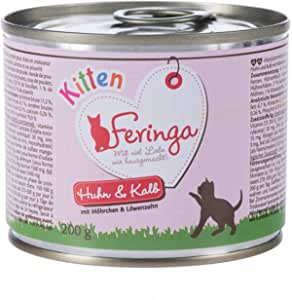In this article we’re going to answer the question “how big do Bengal cats get?,” which you may be wondering if you’re a new Bengal cat owner or thinking of becoming one.
Why is this important?
Well, I’m sure you will want a cat that’s healthy and getting the right amount of food and exercise for its age.
A cat’s size can indicate if these criteria are being met.
In this guide, we’ll take a look at all aspects of Bengal cat size, what you can do if you think your cat is larger or smaller than it should be and more relevant information and advice besides.
Topic Overview
Bengal cats are considered an average to large domestic cat breed.
This applies to height, length and weight.
Of course, there are a number of factors which contribute to size- these are either genetic or lifestyle based.
For those though, wanting a quick, general answer with regards to size, see below…
How Big Do Bengal Cats Get?
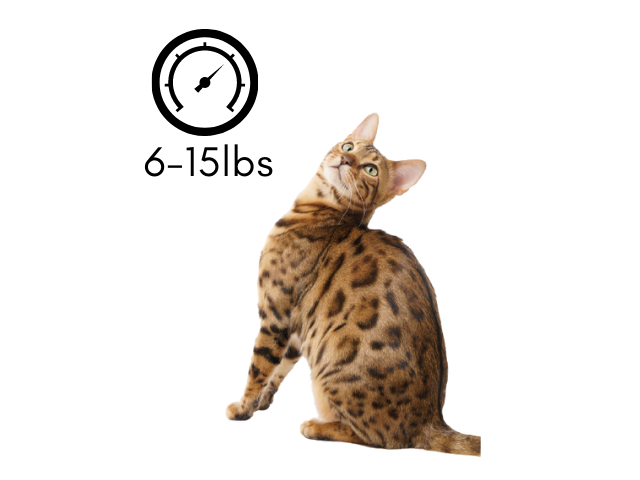
Most adult Bengal cats weigh between 6-15lbs (2.7-6.8kgs), but some specimens have been known to reach the 20lb (9kg) plus mark.
How Long And Tall Do Bengal Cats Get?
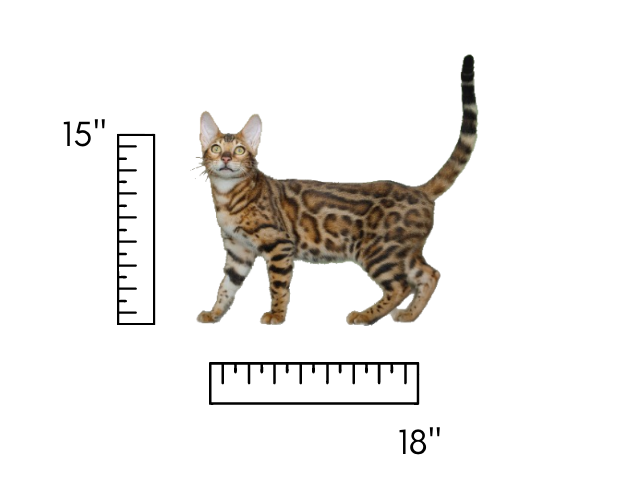
Expect a Bengal cat length of up to 18 inches (45.7cms) for fully grown adults (excluding the tail).
A Bengal cat height (that is, based on what I could find, from the base of front paw to top of the head- ignoring ears) is around 15 inches (38cms).
Of course there are factors that affect how big a Bengal cat will get and one of these is gender…
How Big Do Male Bengal Cats Get?
In most species, the male is bigger than the female and in Bengal cats, this is no different.
Therefore adult male Bengal will tend to be at the upper end of the weight range and on average come in somewhere between 10-15lbs (4.5-6.8kgs).
The biggest are those in excess of 20lbs (9kgs), thanks to all that extra muscle.
How Big Do Female Bengal Cats Get?
In comparison to their male counterparts, female Bengals are usually smaller and you’re very unlikely to find a specimen on par with the largest males.
With that in mind, expect your female Bengal to weigh between 6-10lbs (2.7-4.5kgs).
Gender plays a role in determining Bengal cat size, sure, but it’s by no means the only one…
What Factors Affect The Size Of A Bengal Cat?
As we’ve seen, Bengals fall into a general range of sizes.
But where in the range a Bengal cat will be depends on a few factors, some of which you can play a role in:
Age
As in all cat breeds, a Bengal kitten is not going to weigh as much a full grown adult
That’s obvious.
And as kittens age and turn into cats, they will (assuming they’re fed and exercised appropriately) gain weight.
Any kitten you buy should be at an appropriate size and weight for its age if you buy from a reputable breeder.

Please use the above chart as an approximate guide only as figures varied depending on the information source.
Genetics
The Bengal cat breed originated from a crossing Asian leopard cats with domestic cats.
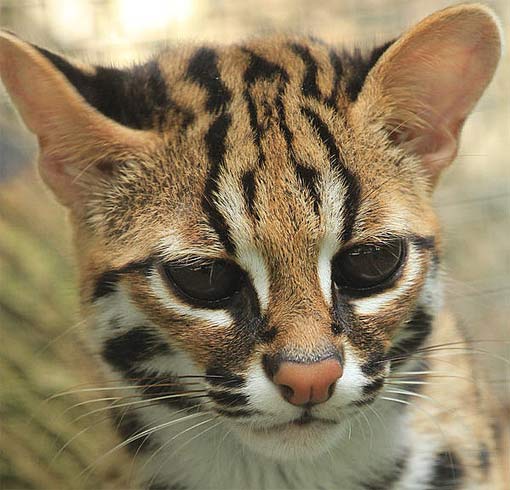
Why is this relevant?
Because not only does the size of the original leopard cat used for breeding play a role, but so to (and arguably more importantly) does the size of the domestic cat used in the cross.
This is because different breeds of domestic cats have been used over the years to create and genetically vary the Bengal breed.
The most common breeding crosses (with approximate weights) are listed below:
- Abyssinian: 8-12lbs, 3.6kgs-5.4kgs
- Bombay: 7-15lbs, 3.2-6.8kgs
- Ocicat: 6-15lbs, 2.7-6.8kgs
- Egyptian Maus: 6-14lbs, 2.7-6.4kgs
- British Shorthair: 7-18lbs, 3.2-8.1kgs
Note: figures on weights varied according to source so I have stated ranges based on the lowest and highest values I found or those that had the greatest consensus.
It doesn’t take a genius to work out then that a Bengal stemming from a British Shorthair line is likely to be bigger than one with Abyssinian ancestry.
But size is not all in the genes…
Neutering
This link to weight perhaps isn’t as obvious.
But neutered female kittens are prone to gaining weight more readily than their unneutered counterparts.
Therefore you may need to keep an eye on levels of food intake and ensure your Bengal is receiving enough exercise, especially if you suspect a gain in weight outside of normal parameters.
Which leads us nicely onto…
Diet
Diet is crucial.
Not only for health reasons, but also with regards to size.
A cat fed suitable amounts of a balanced or ‘complete’ diet will reach its natural and healthy bodyweight.
Those fed an inappropriate food type or too much are likely to be heavier and unhealthily so.
Conversely, a poor diet or too little food and your cat runs the risk of being underweight or even malnourished.
More on what constitutes a balanced diet later.
Next though, exercise…
Exercise
Diet and exercise are often stated together as being great ways to regulate bodyweight.
Regular, sufficient exercise encourages a healthy bodyweight.
Bengal cats are spritely individuals and need no encouragement to stretch their legs.
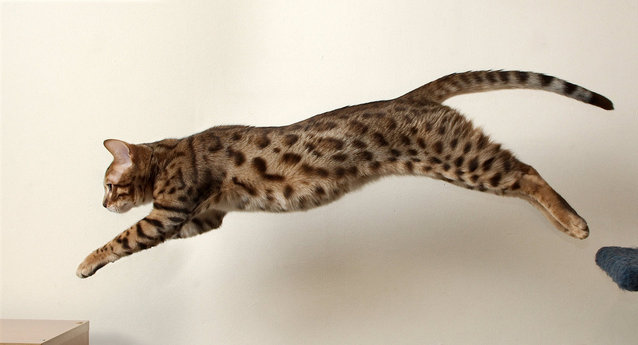
However there can be problems if you live in a small apartment and are not prepared to let your cat venture outdoors.
Again, we will touch on this in a separate section later.
If you’ve established there’s a weight problem, then it’s time to take action…
What Can I Do If My Bengal Is Too Big For Its Age?
First rule out any potential health issues.
This involves knowing your cat’s eating habits and routine.
If unsure, visit your vet.
Cats tend to self-regulate their food intake, that is, they don’t tend to overeat.
However, a Bengal that’s too big may simply be eating too much.
In which case you can try reducing portion size, the number of meals you give your cat each day and cut back on or cut out treats.
In the book, ‘What Cats Want,’ author Dr. Yuki Hattori suggests that if you use dry food, dispense it in a puzzle feeder or hide it around the house in order to encourage grazing.
Food manufacturers usually state on packaging how much food should be given each day, but it’s also about knowing your cat’s eating habits.
Even if your Bengal isn’t being overfed, a lack of exercise may contribute to a higher body weight.
This is more likely in Bengals kept as house cats.
Therefore, ensure your Bengal gets extra playtime and a chance to run around and burn off calories.
If yours is a housecat, also consider taking it for walks or investing in a cat wheel.
What Can I Do If My Bengal Is Too Small For Its Age?
The opposite can also be problematic.
Again, look at the possibility of health problems first.
If you suspect anything untoward, a trip to the vet may be in order.
Also review your feeding regime.
Is your Bengal getting all the nutrients it needs?
Try increasing the frequency of meals or portion size- ensuring you are feeding quantities suitable for your cat’s age.
If you’ve recently changed food brand or type, consider returning to what it was fed previously.
Another suggestion I found was to warm food up in order to make it smell more and hence, make more appealing.
To spot a potential problem with your Bengal, you’ll need to weigh it.
The video below shows a couple of ways you can do this:
Bengal Cat Diet
Of course what your Bengal cat eats will affect its size.
What to feed a Bengal may seem obvious- cat food, but it’s a little more complicated than that.
Many advocate a raw meat diet that closely resembles what a cat would eat in the wild.
This on the face of it makes sense, but there are problems, namely ensuring the percentage mix of muscle, bone and organ meat is correct.
Suitable quantities of vitamins and minerals may also need to be added.
Additionally, raw meat comes with an added infection risk towards humans posed by the bacteria it may carry.
Wet food is considered better than dry and you should aim for ‘complete’ food if possible.
When buying wet food, we always aim for complete food with the highest percentage of meat in, and grain free as to avoid any upset stomachs.
There’s a section in this article which mentions diet and provides some helpful links.
When Is A Bengal Cat Considered To Be Fully Grown?
The general consensus seems to be that you can expect your Bengal to reach maximum height and weight between one-and-a-half to two years old.
That is for most cats, although apparently some can continue to grow until they hit three.
What Is The Life Expectancy Of A Bengal Cat?
The life expectancy of Bengal cat ranges from 12-20 years with an average of around 15 years.
These figures do vary slightly according to what you read.
Much can be done to give a Bengal a chance of reaching the 20 year mark- for some actionable ideas, please read “How Long Do Bengal Cats Live? 12 Excellent Ways To Boost Life Expectancy.”
You may be wondering whether Bengals, owing to their larger size, are suited to small dwellings.
And we shall look at this next…
Is A Bengal Suitable For A Small Apartment?
There is no definitive answer, but if you want my opinion based on my experiences, I would say the following.
No.
And this actually has nothing to do with their size.
Indeed, some of the largest cat breeds, such as the Maine Coon below, are deemed by many to be suitable for small homes.
Males can reach 25lbs (11.3kgs), so generally larger than the biggest Bengals.
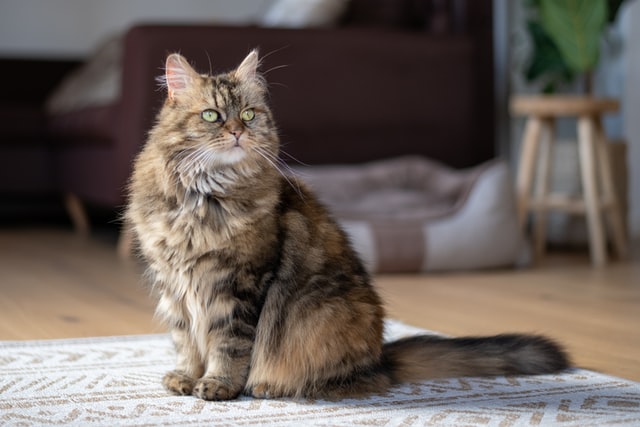
Bengals are a highly inquisitive and energetic breed (especially as kittens) that demand a higher level of mental and physical stimulation.
If this need is not met, there is a potential risk to their overall wellbeing.
Additionally they will try to find stimulation somewhere and somehow which can lead to destructive behaviour- see “Female Kitten For Sale.”
Of course I am generalising, and some individuals will be fine in a small home, but if buying a kitten, you won’t necessarily find that out until it’s too late.
You can help mitigate against destructive behaviour and boredom by doing the following:
- Taking your cat for a walk
- Buying a cat wheel
- Teaching your cat tricks
But even then, some of these things may not be sufficient.
How Big Do Snow Bengal Cats Get?
The weights and sizes mentioned refer to all Bengal colours and patterns.
Which means Snow Bengals are no larger or smaller than any others.
For a more in depth look at Snow Bengals, see “Snow Bengal Cats: The Most Definitive Guide.”
Summary
Bengals are one of the larger domestic breeds.
Numerous factors such as ancestry, gender and diet play key roles in determining your cat’s final size.
Colour does not.
Any derivation from what’s considered normal in terms of say weight, may indicate a problem and should at least initially, be looked at by a vet.
Beyond this, ensuring a healthy diet and regular exercise will give your Bengal the best chance of reaching an ideal weight, will help increase life expectancy and keep you and your Bengal happy.
The following articles will also aid those aims greatly…
Further Reading:
Please note, Amazon links on this page are affiliate links from which I’ll receive a small percentage if you purchase at no extra cost to you. It all helps. Thanks.



